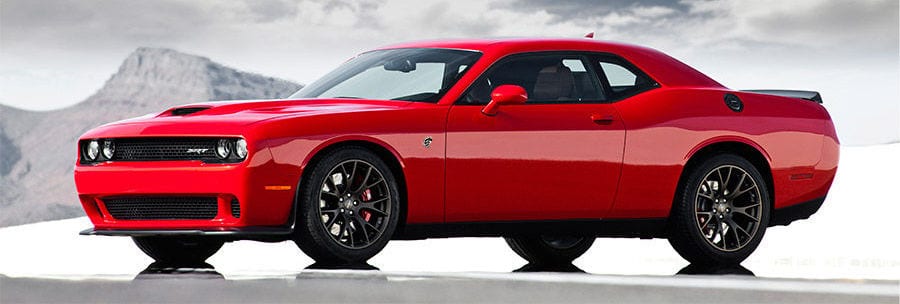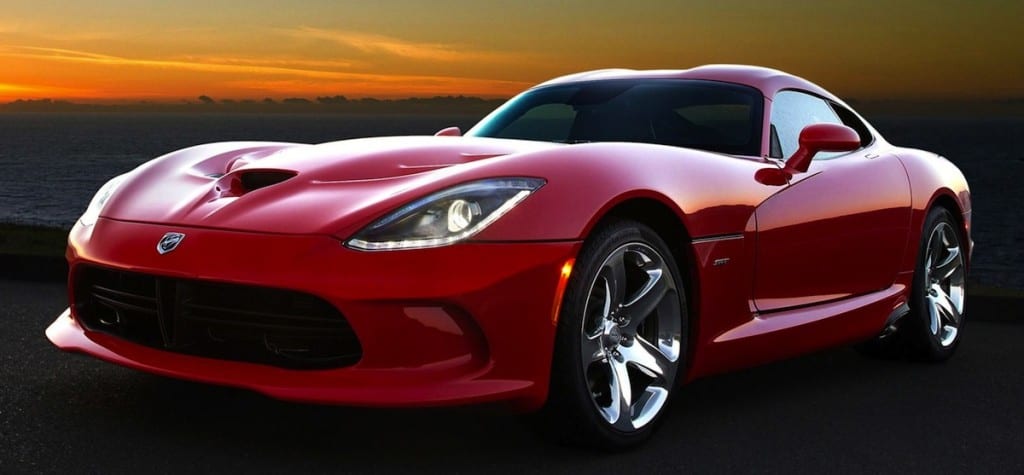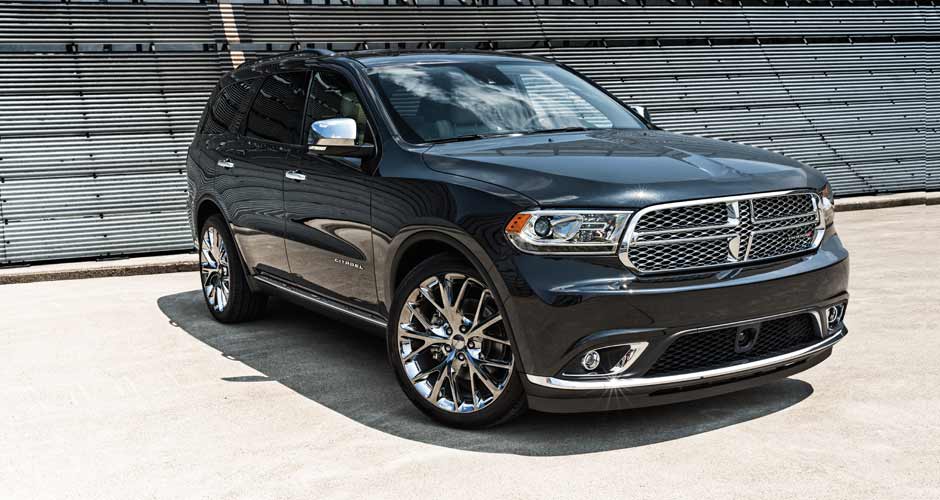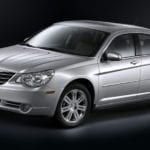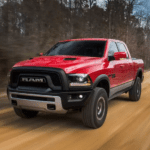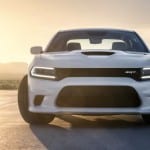We’ve grown to love Dodge’s current crop of vehicles, as each of the offerings present their own specific capabilities and features. Similar to many car enthusiasts, we spend a lot of our time researching the history of our preferred nameplates, and those searches end up unraveling some interesting stories. These fun facts aren’t limited to one or two models; we were able to uncover some interesting tidbits on each of Dodge’s seven vehicle offerings: the Charger, Challenger, Dart, Viper, Journey, Durango, and Grand Caravan.
We’ve compiled fun facts for each of these vehicles below. That way, when you inevitably end up at a Dodge dealership, you can impress the salespeople with these random bits of knowledge…
The Beloved Charger Was Actually a Second-Generation
The Charger certainly became mainstream thanks to its iconic appearance as the villain’s vehicle in the Steve McQueen classic “Bullitt,” and it also became popular due to its role as “General Lee” on The Dukes of Hazzard. However, the vehicle truly made a name for itself on the racing circuit during the late 1960s and early 1970s.
Incredibly, this old-school Charger that we’re mostly familiar certainly isn’t an original. The initial Charger featured a distinctive fastback roof and an innovative front grille. The Charger we’re familiar with includes a bold front nose and a square hardtop roof, resulting in (as Edmunds.com described it) a Coke-bottle shape.
Challenger is the First Dodge to Feature a Pair of Keys
We’re cheating a bit here and mentioning the Dodge Challenger Hellcat (mostly because we can’t get enough of the incredible sports car). The nameplate is the first vehicle in the brand’s history to include a pair of operating keys.
The red key is intended to unlock all of the vehicle’s eye-popping power specs. When inserted into the ignition, drivers will watch as the engine hits 707 horsepower, and the Challenger’s suspension, steering, and traction will automatically adjust based on the increase in power. The red key is the one to use when you want to impress your passengers or fellow drivers.
Meanwhile, the black key limits that power, providing an easier-to-control sports car. Horsepower is limited to “only” 500 fillies and the RPM is consistently kept below 4,000. Furthermore, the transmission is kept out of first gear, and the lack of a paddle shifter means the Challenger is easier to handle than rival sports car. The black key is what you hand to the valet with the hope that they won’t go on a brief joyride in your new car.
The Dart is the “Most Technologically Advanced Car in its Class”
According to the 2015 Ward’s Report, the Dodge Dart features the most technological features in the Small Upper Sedan Segment (under $25,000). When you actually look at all the vehicle has to offer, this shouldn’t come as too much of a surprise.
The vehicle features the Radio 8.4 system, which includes the 8.4-inch high-resolution touchscreen. The unit will allow you to access a number of applications, whether it be SiriusXM Satellite Radio or the Garmin Navigation system. The unit will also provide real-time updates on traffic, weather, sports scores, and even movie times. If you’re listening to music, you’ll be able to enjoy it via the 506-watt Alpine sound system, which provides nine speakers and a large subwoofer.
Meanwhile, the Class-Exclusive seven-inch customizable Driver Information Digitial Cluster Display provides a variety of real-time information that will assist drivers on their journeys. Drivers can easily access their fuel economy, navigation, speedometers, and even vehicle diagnostics.
The Viper’s First Engine Was Borrowed From Ram
The Viper has established itself as one of the most powerful vehicles on the road, but the original version of the nameplate actually included a pickup’s engine under the hood.
That’s right. When the vehicle first debuted in 1992, it included the same V8 engine as was featured in Ram’s grouping of trucks and vans. Why didn’t they just produce their own unit?
Dodge had been planning to roll out an impressive V10 engine, and after determining that such a unit would be excessively heavy, they settled on producing the motor out of aluminum. Of course, this meant that they had to produce the first aluminum V10 engine, a task that would certainly take time. With the brand looking to unveil their new Viper sooner than later, the engineers had no choice but to include an engine that was of a similar weight to their anticipated aluminum unit. Considering Dodge’s connection with Ram, the pickup engine was the natural choice.
The Journey Goes By Another Name
The Dodge Journey has established itself as one of the top mid-size crossover SUVs on the United States market, but the vehicle goes by a different alias in other countries.
When the Mexico-produced Journey debuted at the 2011 Geneva Motor Show in Europe, it was called the Fiat Freemont. The name ended up sticking, as it was also used when the vehicle was introduced in Italy a few months later.
In Austraia and Brazil, customers can purchase both the Freemont and the Journey, with the Freemont only offering the 2.0-liter and 2.4-liter four-cylinder engines (the Journey includes the Pentastar V6). While the vehicle has been taking the rest of the world by storm, there is some general skepticism that the Journey will ever reach the United Kingdom.
Ron Burgundy Helped Boost the Durango’s Sales
Remember in 2013 when actor Will Ferrell (dressed as the iconic Ron Burgundy) appeared alongside the Dodge Durango to help push his new movie, Anchorman 2? Well, believe it or not, those random cameos ended up boosting the nameplate’s sales to some incredible heights.
After Ferrell started appearing in the commercials in late summer, the company saw their Durango sales increase by 59-percent. Of course, many customers may have simply been intrigued by Burgundy’s assertion that he was a “man who discovered the wheel and built the Eiffel Tower out of metal and brawn.” With those accomplishments on his resume, we’d also trust his car advice.
The Dodge Grand Caravan Was Rejected by Henry Ford II
In the early 1970s, Lee Iacocca and Hal Sperlich were working for Ford, and the duo conceived an idea for a brand new minivan. They brought the idea to their boss, Henry Ford II, who outright rejected the prototype. Instead of throwing out their idea, Iacocca and Sperlich held the plans in their back pocket.
The pair ended up moving over to Chrysler, where they ended up producing their T-115 minivan prototype. Marketed as their “magic-wagons,” the company ultimately introduced their new Dodge Caravan in late 1983. Of course, the move ended up working, as the nameplate eventually established itself as one of the most popular minivans on the market.
Interesting stuff, right? We’re so focused on the brand’s current crop of vehicles, we often forget what these nameplates previously endured. I personally find myself having more respect for the Grand Caravan, especially when you consider the effort the engineers had to go through to get the vehicle on the market.
You probably weren’t aware of some of these tales – all of which only enhance the legend that is Dodge. These stories certainly add some context to each of the brand’s impressive vehicles, and you probably find that you now respect these nameplates a little bit more.

